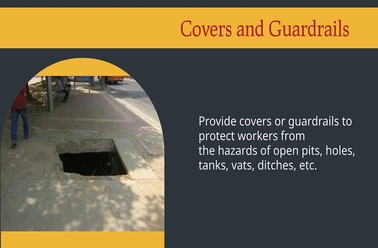This course helps employees meet requirements of the new OSHA standard regarding construction activities in confined spaces. Available in English or Spanish.
Course Overview
The Walking-Working Surfaces standard can be viewed from the perspective of two major categories: One relates to the hazards associated with falls at the same level; and the other relates to the hazards associated with falls from elevated surfaces.
The majority of general industry accidents are caused by slips, trips and falls. In addition, 15 percent of those accidents result in fatalities.
This course touches on several areas of consideration such as maintaining a clean workplace, providing safe access to and egress from any horizontal or vertical surface on or through which a person walks, works, or gains access to a workplace location. The requirements include those surfaces inside work facilities as well as on company property.
The primary purpose of this standard is to help you learn the importance of identifying and protecting against hazards related to walking and working surfaces. This course and the OSHA standards contained within, apply to all permanent places of employment, except where only Domestic, Mining, and Agricultural work is performed.
What you will learn
- Be able to protect against common hazards related to walking and working surfaces, housekeeping, and guarding floor and wall openings.
- Understand the general standards for portable metal and wood ladders, including fixed ladders and important usage guidelines.
- Know the common hazards associated with scaffolds and other working surfaces.
- Identify the hazard controls that must be implemented when a hazard is identified.










